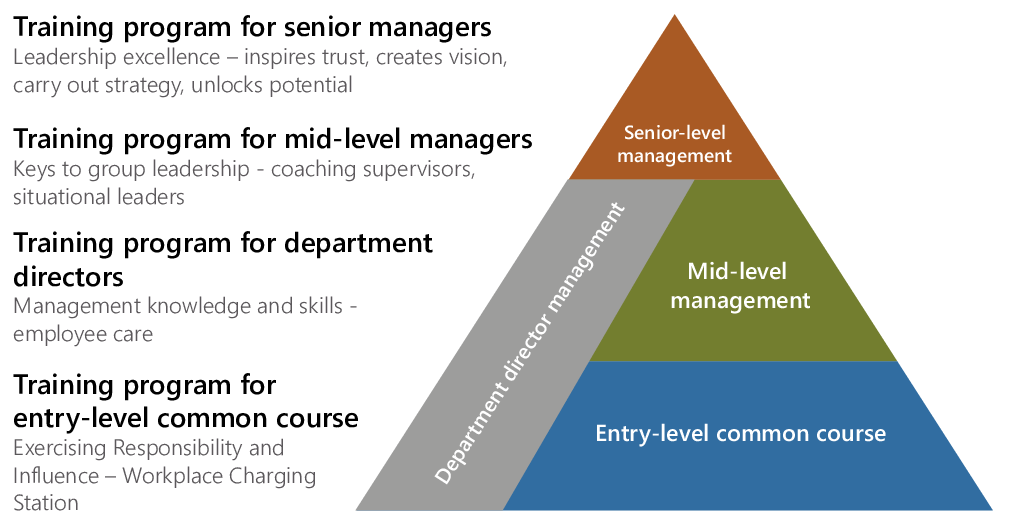Compal’s talent cultivation has been established to support the Company’s overall strategies, talent plans, organization structure, and corporate vision. Major development priorities and projects are devised according to organizational goals and departmental goals, a comprehensive learning development system and learning blueprint are constructed according to functional development needs, and employees are provided with a wide variety of channels to learn from. We are also committed to motivating employees to learn independently, planning a Compal credit system to evaluate the learning effect, and creating a continuous learning atmosphere in the organization.
Global Training Data in 2022
Training and Development data
| Type |
Hours of Training and Development |
Costs of Training and Development |
| Total hours of training |
Average hours of training per person |
Total cost of training |
Average cost of training per person |
| Taiwan |
718,684.62 |
76.91 |
$26,281,501 |
$2,812.66 |
| China |
770,523.67 |
17.61 |
$3,017,596 |
$68.98 |
| Total |
1,489,208.29 |
28.05 |
$29,299,097 |
$551.91 |
Note 1: The data covers the period of 2022/1/1-2022/12/31.
Note 2: Average hours of training per person = total hours of training / total number of employees / Average cost of training per person = total cost of training / total number of employees (currency: NT$)
Classification of Training and Development data: Direct employees vs. indirect employees
| Type |
Direct employees |
Indirect employee |
| Total hours of training |
Average hours of
training per person |
Total hours of training |
Average hours of
training per person |
| Taiwan |
Male |
119.41 |
0.74 |
651,644.65 |
106.06 |
| Female |
1907.91 |
2.2 |
65,012.64 |
29.93 |
| China |
Male |
431,783.36 |
27.27 |
80,506.58 |
6.81 |
| Female |
213,396.60 |
23.16 |
43,251.13 |
6.3 |
| Total |
647,207.28 |
24.82 |
840,404.00 |
31.11 |
Training and Development data: Managerial vs. non-managerial positions
| Type |
Managerial position |
Non-managerial position |
| Total hours of training |
Average hours of training per person |
Total hours of training |
Average hours of training per person |
| Taiwan |
Male |
73729.1 |
22.81 |
578,034.96 |
188.1 |
| Female |
16900.31 |
22.18 |
50,020.25 |
21.97 |
| China |
Male |
16,372.85 |
8.76 |
496,806.09 |
19.26 |
| Female |
9,240.83 |
6.94 |
248,103.90 |
16.82 |
| Total |
116,243.09 |
16.15 |
1,372,965.20 |
29.92 |
Classification of Training and Development data: by gender
| Type |
Total hours of training |
Average hours of training per person |
| Taiwan |
Male |
651,764 |
103.37 |
| Female |
66,921 |
22.02 |
| China |
Male |
513,179 |
18.55 |
| Female |
257,345 |
16 |
| Total |
1,489,208 |
28.05 |
Classification of Training and Development data: by age, nationality, and training type
| Classification |
Male |
Female |
| Total number of employees |
Total hours of training |
Total number of employees |
Total hours of training |
| Age |
under 30 years old |
117,141 |
464,936.05 |
57,009 |
211,800.84 |
| 31-50 years old |
95,341 |
684,295.61 |
35,413 |
116,884.53 |
| over 51 years old |
7,329 |
8,536.47 |
1,660 |
2,754.83 |
| Country of Citizenship |
Taiwan |
139,949 |
652,751.42 |
50,628 |
65,093.17 |
| China |
79,593 |
509,815.80 |
42,552 |
258,612.28 |
| others |
770 |
980.85 |
401 |
1,954.85 |
| Training type |
Internal training |
218,508 |
1,152,862.37 |
92,593 |
318,818.10 |
| External training |
1,838 |
12,080.70 |
954 |
5,447.20 |
Note : Definition of training types: Internal training is defined as training planned and organized by the Company; whereas external training is defined as training carried out by external training units for employees of the Company.
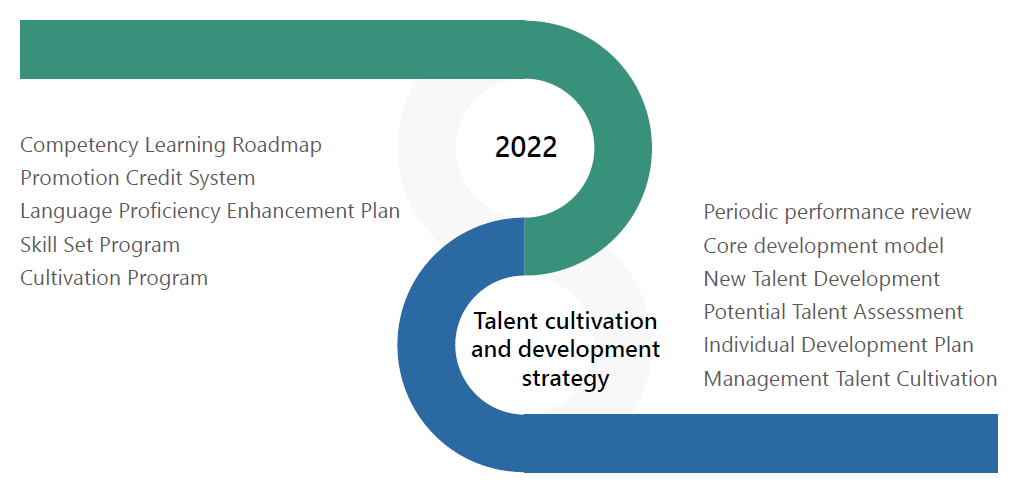
Diverse Learning Channels
Compal has developed a comprehensive internal learning management system for talent cultivation. The Company’s learning resources are integrated through e-learning so that employees at all Compal plants can share in our extensive knowledge and learning platform. The E-learning platform offers personalized learning for employees so they know their exact academic progress. The learning roadmap can also be used to track progress., Big data analysis is even used by Compal to obtain a full picture of learning & development by employees. Compal’s continued promotion of e-learning saw global cumulative visits reach 530,000 in 2022, up 14% from last year.
Employee Development Programs
Program 1. Promotion credit system
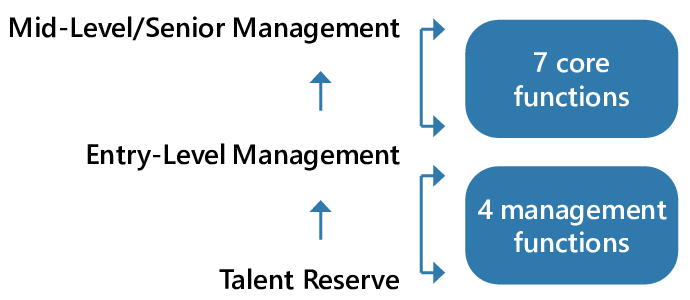 To ensure that every Compal employee possesses the abilities and knowledge required for their role when they are appointed to a new management position, hierarchical learning courses were developed for different competencies. By enhancing the employee’s character and ability, we can satisfy the needs of organizational development and maximize training perform through more effective use of training resources. The system is also used to help employees develop their personal learning plan, encourage self-learning and development, and boost their motivation to learn. Employees can use it to track their progress, set learning goals and milestones, and manage their learning performance. Between 2017 and 2022, training was conducted 19,671 times for a total of 143,779 training hours. Aggressive promotion each year saw a tripling in the number of training sessions and hours in 2022 compared to 2017. Compal will continue to implement this program in the future to cultivate sustainable talent development.
To ensure that every Compal employee possesses the abilities and knowledge required for their role when they are appointed to a new management position, hierarchical learning courses were developed for different competencies. By enhancing the employee’s character and ability, we can satisfy the needs of organizational development and maximize training perform through more effective use of training resources. The system is also used to help employees develop their personal learning plan, encourage self-learning and development, and boost their motivation to learn. Employees can use it to track their progress, set learning goals and milestones, and manage their learning performance. Between 2017 and 2022, training was conducted 19,671 times for a total of 143,779 training hours. Aggressive promotion each year saw a tripling in the number of training sessions and hours in 2022 compared to 2017. Compal will continue to implement this program in the future to cultivate sustainable talent development.
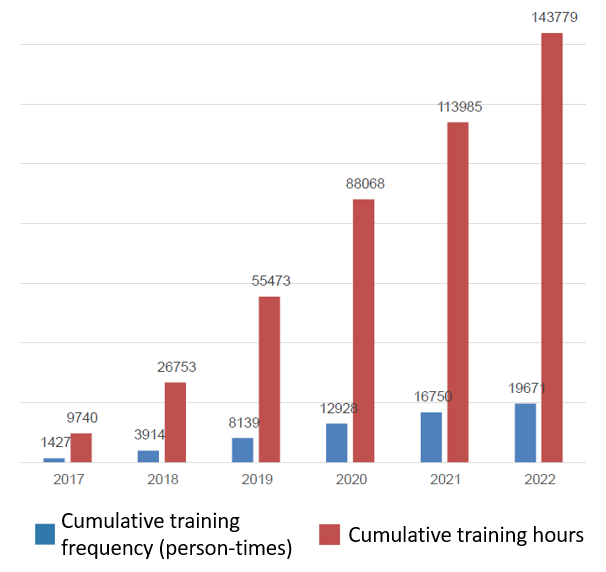
Business Benefits to the Enterprise
☆ Establishing Compal's common language and comprehensively promoting the training system from top to bottom
A long-term project, the promotion credit system has been in place for more than 5 years. Through the implementation of this plan, each employee, when being promoted from an individual worker to a middle/senior manager, is able to further enhance their career options by taking practical training provided by the Company. In 2022, 43.2% of employees improved abilities required for new positions due to the promotion credit system, and the promotion rate of participating employees has reached 24.7 %. This promotion credit system has created a positive atmosphere in Compal's corporate culture, moving the Company towards the goal of a common language requirement for the talent pool.
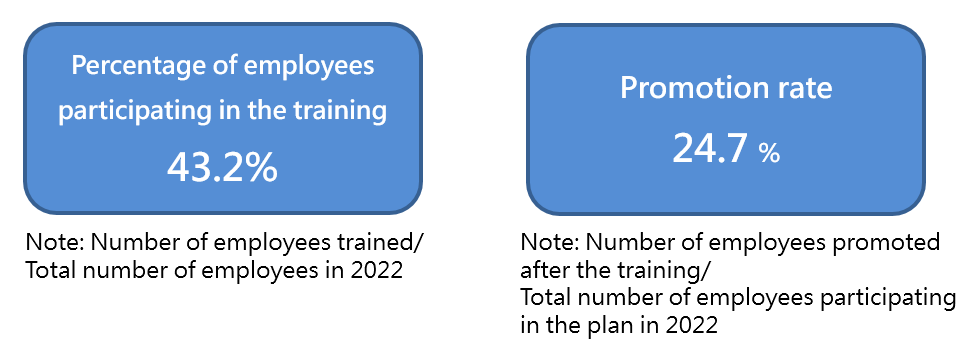
☆ Implementing a training mechanism that is open, transparent and complete
At Compal, we clearly define the skill sets required for each position, and design an open and transparent training mechanism to align the growth of employees with the development goals of the Company. In addition, the training mechanism can also enable the front-line grassroots personnel to clearly understand the Company's vision, focus on the direction of their personal development, know in advance the capabilities they need for the future, to give them a head-start on preparing for their future with Compal. As for the upper-level managers, will learn to more clearly understand the capabilities of their subordinates and give full play to the strengths of their subordinates, while finding out their weaknesses to help strengthen them, so as to retain high-quality talent for the Company, and gather a coherent group of employees all moving in the same direction.
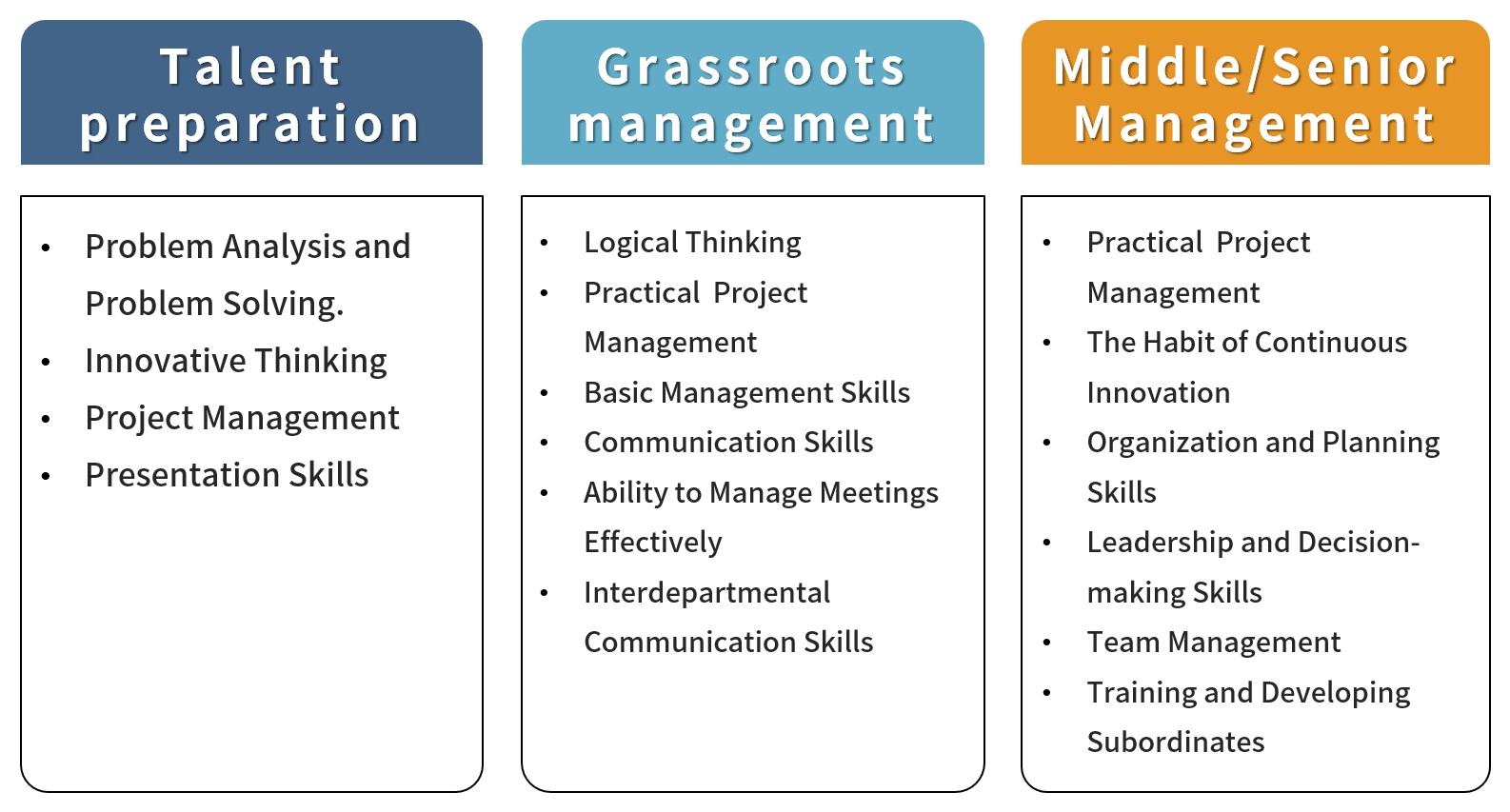
Overall, through this plan, Compal has created an environment for employees’ independent learning, shaped a transparent management system, integrated training resources across the Company, and reduced the cost of manpower and time in repeated training. In the future, through the strength we have, we will continue to expand our understanding of sustainable development, promote all global sustainable development goals (SDGs), and do our best to give back to society!

Program 2. Individual Development Plan
In 2022, a total of 1,969 employees participated in this program, and the retention rate of those participating employees reached 96.65 %, which helps Compal continue to shape high-quality talents, construct key knowledge, and enhance the overall competitiveness of the Company.
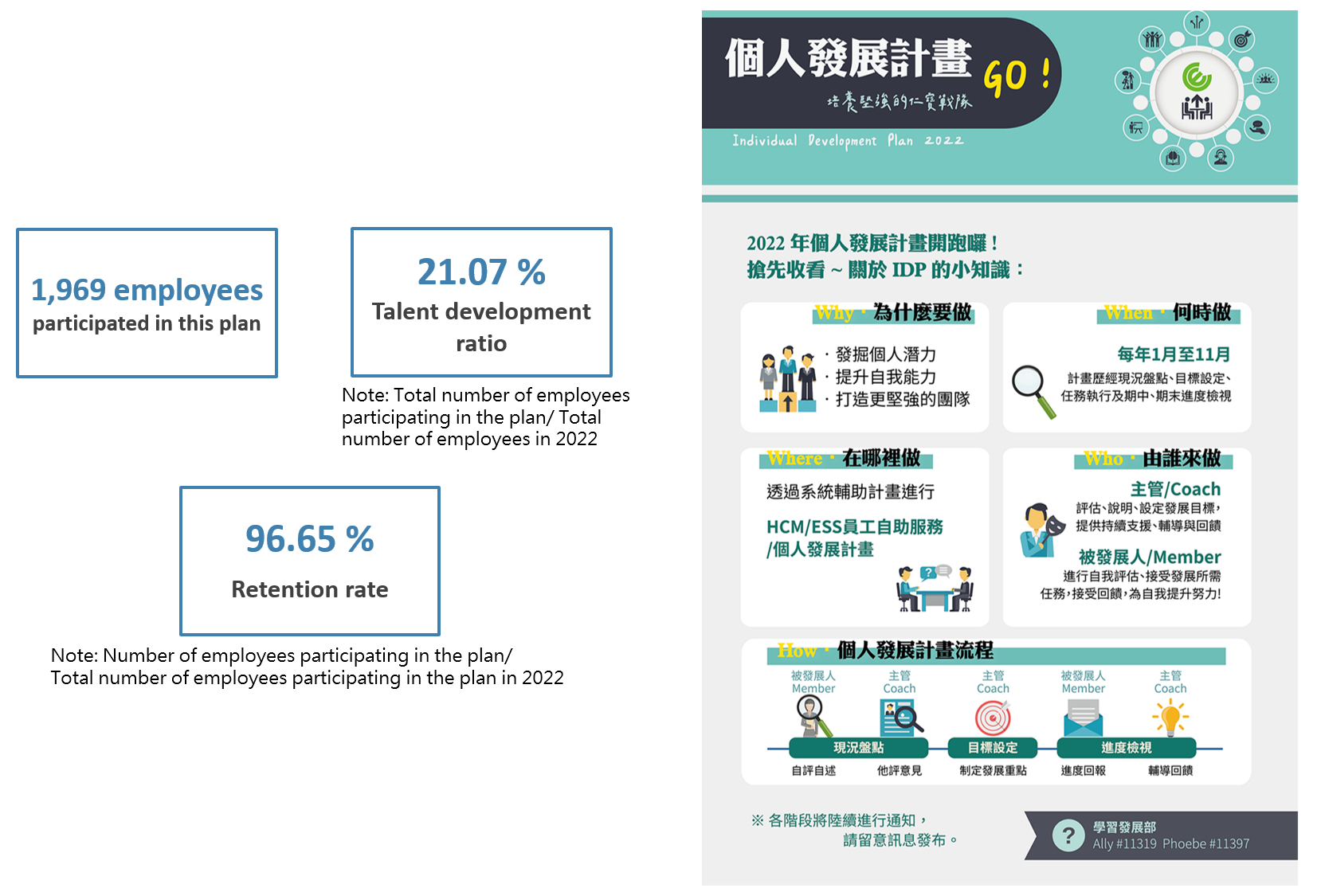
Language Ability Improvement Program
In order to improve employees' English ability, international perspective, and cross-cultural understanding in response to the advent era of global competition, we provide a diversified English learning environment so that the organization can be connected to the global market.
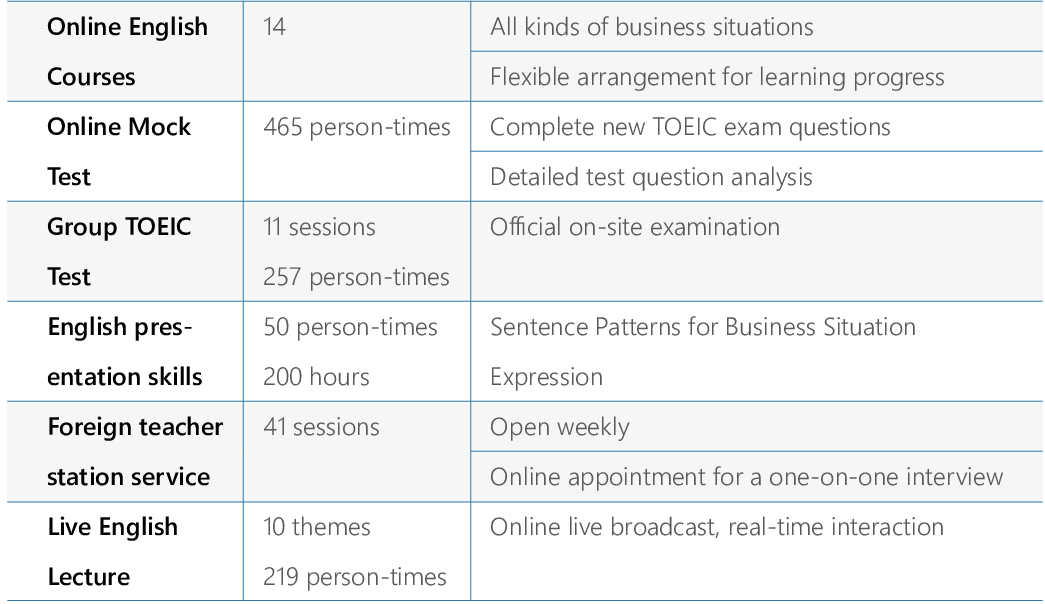
Periodic Performance Appraisal
| Performance evaluation items |
Description |
Frequency |
Newcomer Evaluation
after Probationary Period |
Through the assessment and evaluation of newcomers after their probationary period, we can understand their suitability in their current position.In addition to offering an "official appointment" for qualified newcomers, "extended probation" or "stopping probation" (if the probation fails) may be determined for incompetent newcomers, thus sticking to our standard in our evaluations of newcomers. |
After 2 months
of new employment |
| Annual Performance Evaluation |
The annual performance evaluation is designed to: implement goals, strategies, and measures of the Company, departments, and individuals; establish a work performance-oriented review system; and train employees to clearly understand their personal work goals and improve their work efficiency. Through effective performance management, we can assist the team to achieve its performance goals, promote the right personnel within the organization to the right positions, enhance the overall quality and professional capabilities of the employees, and further create growth in the Company's operating performance. In addition, with the project organization as the structure, project organization supervisors conduct a series of evaluations on the professional functions displayed through the overall work performance of the project preparation team members during the course of the project according to the project's strategic goals and actual results demonstrated. |
Once a year |
360-Degree
Feedback Evaluation |
A 360-degree feedback evaluation is designed to strengthen the integration of teams among units and break the barriers and departmentalism between departments. Through mutual evaluations and feedback from perspectives across multiple fields, a more objective and specific measurement basis can be obtained, thus helping supervisors break through blind spots in management, have a more objective and specific measurement basis for annual performance evaluation, and provide directions for subsequent training of subordinates. |
Once a year |
| Individual Development Plan |
In order to meet the long-term needs in development of management talents of the organization, we use an objective and systematic mechanism to identify potential talents who are useful to the organization, and formulate personal development plans for those potential talents, so as to build an excellent talent pool. |
Once a year |
New Employee Training Program
| Physical course |
Orientation training for new recruits |
Company Introduction, human resource system, welfare policy, information operation instructions, etc. |
| Compal talent training class |
Workplace role definition, workplace culture, emotional management, workplace communication, etc. |
| Online course |
On-the-job training for new recruits |
Quality management, information security, codes of conduct for employees, prevention of workplace violence, etc. |
| Workplace adaptation course |
Career planning, manage upwards&downward, peer relationship management, etc. |
| Occupational safety and health workshop |
Regulation introduction, code of practice for labor Safety, safety awareness, etc. |
| Common sense of fire safety |
Fire prevention, escape plan, equipment introduction, etc. |
| Employee Care |
Counselor system |
One-to-one counseling system to help newcomers adapt to the work content |
| Online questionnaire for new recruits |
Investigate adaptation during onboarding |
| Newsletter for new recruits |
Resources and tips for newcomers |
Management Talent Training
Human Capital Return on Investment (HC ROI)
| Year |
2019 |
2020 |
2021 |
2022 |
| Number of employees |
81,743 |
112,761 |
109,709 |
73,120 |
| HC ROI |
1.928 |
1.972 |
2.140 |
2.022 |
Note 1:HC ROI = (Revenue- (Operating- Employee related expenses))÷Employee related expenses
Updated on July 28, 2023
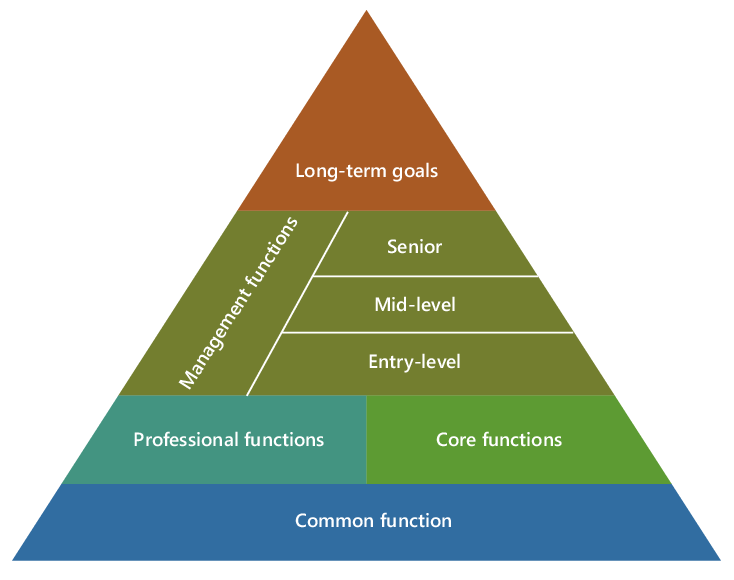

 To ensure that every Compal employee possesses the abilities and knowledge required for their role when they are appointed to a new management position, hierarchical learning courses were developed for different competencies. By enhancing the employee’s character and ability, we can satisfy the needs of organizational development and maximize training perform through more effective use of training resources. The system is also used to help employees develop their personal learning plan, encourage self-learning and development, and boost their motivation to learn. Employees can use it to track their progress, set learning goals and milestones, and manage their learning performance. Between 2017 and 2022, training was conducted 19,671 times for a total of 143,779 training hours. Aggressive promotion each year saw a tripling in the number of training sessions and hours in 2022 compared to 2017. Compal will continue to implement this program in the future to cultivate sustainable talent development.
To ensure that every Compal employee possesses the abilities and knowledge required for their role when they are appointed to a new management position, hierarchical learning courses were developed for different competencies. By enhancing the employee’s character and ability, we can satisfy the needs of organizational development and maximize training perform through more effective use of training resources. The system is also used to help employees develop their personal learning plan, encourage self-learning and development, and boost their motivation to learn. Employees can use it to track their progress, set learning goals and milestones, and manage their learning performance. Between 2017 and 2022, training was conducted 19,671 times for a total of 143,779 training hours. Aggressive promotion each year saw a tripling in the number of training sessions and hours in 2022 compared to 2017. Compal will continue to implement this program in the future to cultivate sustainable talent development.





